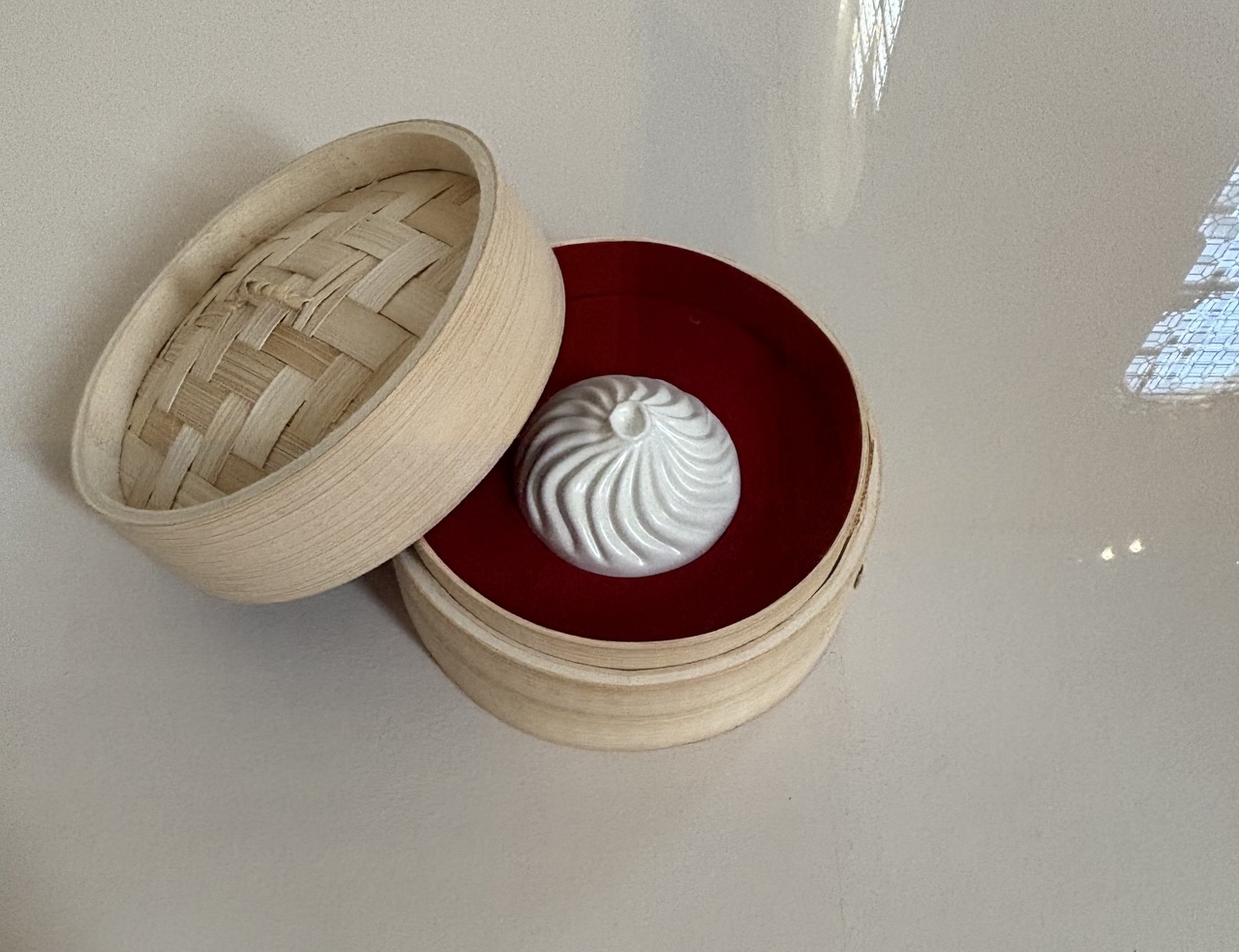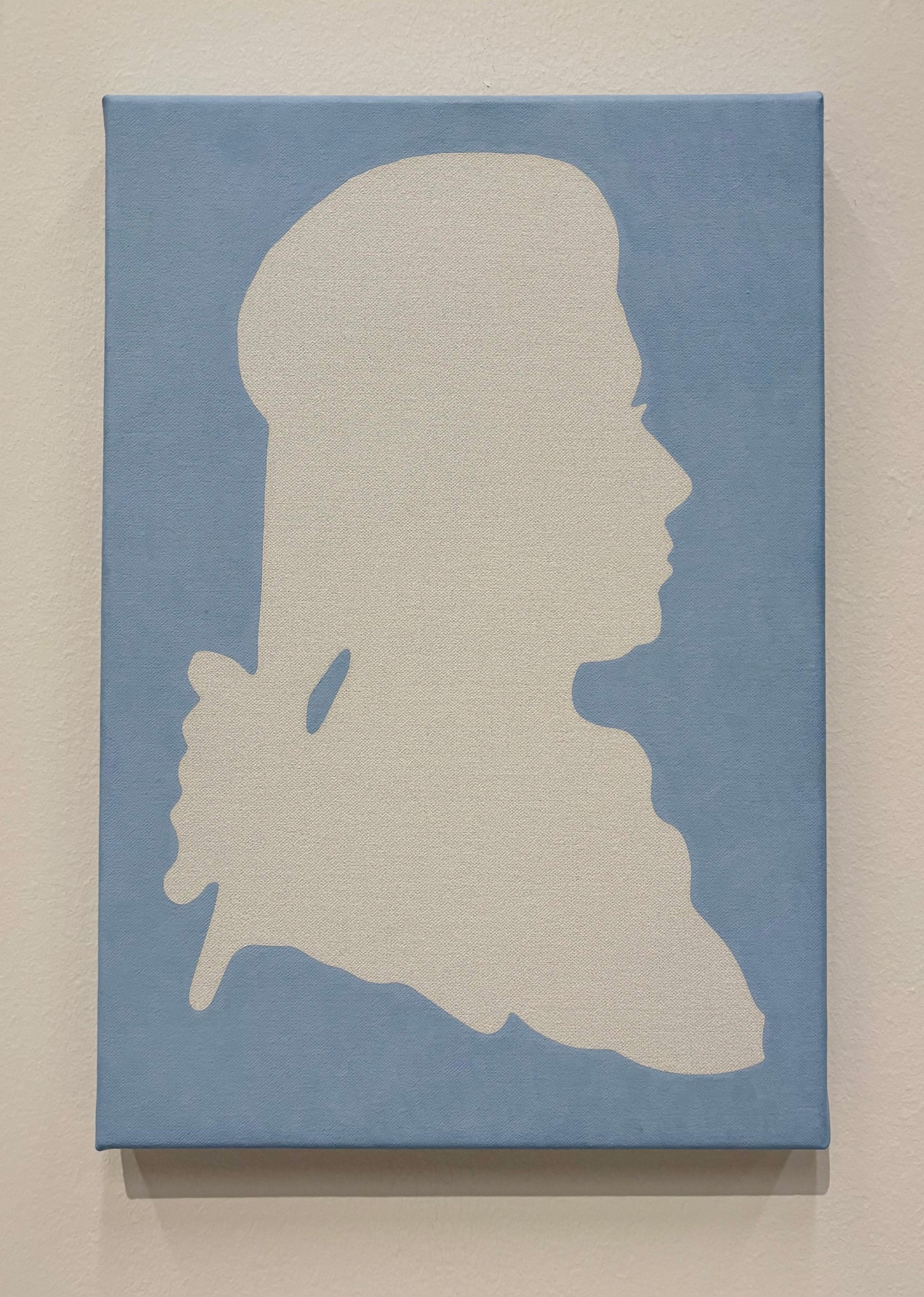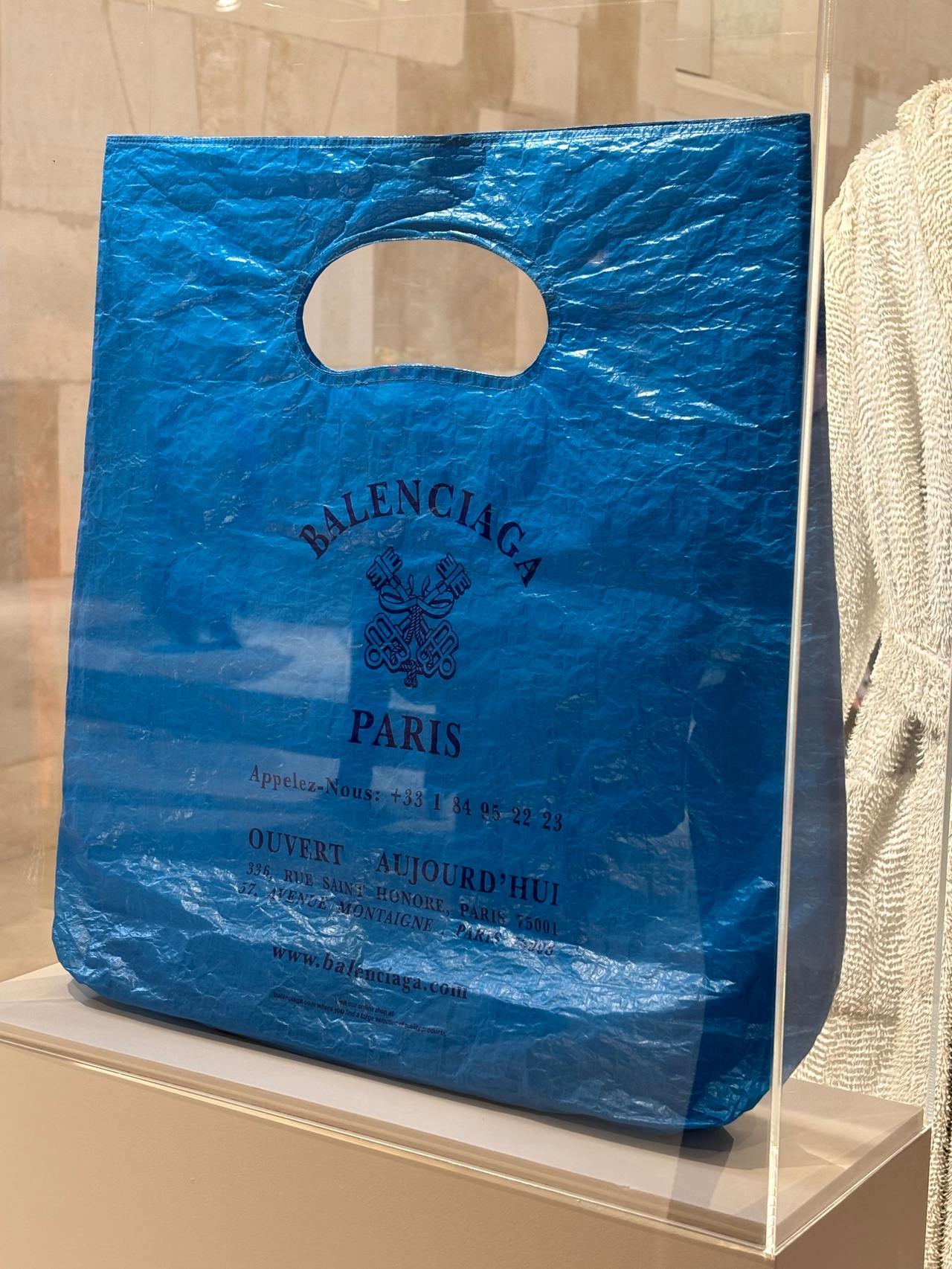BRUCE HAINLEY TO ANNETTE WEISSER Paris, July 2, 2025

Invitation as sculpture
Last week, Annette Weisser’s first letter to Bruce Hainley marked the beginning of our new online column, in which two pen pals – our self-proclaimed “Supertramps” – will, over the coming months, exchange observations and musings about the not-so-simple present. Like Weisser’s first message, Hainley’s reply has been penned during the holiday season, which he spent in Paris, adapting his routine quotidienne to the summer heat. Sweating like a dim sum, he reconsiders the “injustice under the sun” – which Alfred Döblin once borrowed from the Bible, and which Rainer Werner Fassbinder recited in a voice-over for his series adaptation of Berlin Alexanderplatz – in the context of the advanced climate crisis. Then again, he finds himself beguiled by the fragrance of flowers at the Jardin des Tuileries and reflects on a visit to Demna Gvasalia’s pop-up survey, on the aftermath of Fashion Week, and, last but not least, on the state of art and its (formidable!) future.
Annette,
It’s almost too hot to broach how hot it is in Paris right now. The sun’s clarity is relentless, its scorching relentless; to try to move through the city yesterday felt like submitting to a continuous steaming, as if every single creature were a kind of dim sum, slowly, sweatily wobbling its way to doom. Even the pigeons seemed completely over it, flocking in any available shade, their coos’ au secours.
Do I remember correctly that the last time we taught together (over a decade ago?!) was for a class that included a three-day-weekend marathon screening of Rainer Werner Fassbinder’s Berlin Alexanderplatz? I recently rewatched the whole series and found it, yet again, overwhelmingly formidable. However freaked by moments of tenderness, bits of forlornly comic relief, a violent psychic storm awaits, always about to unleash its fury. With his reading of Alfred Döblin’s novel, RWF vivisects many kinds of masculinity and testo-debasements that remain so (I don’t have to tell you) ferociously, deplorably relevant. At one point in the final episode before the blitzkrieg-rave of its epilogue-dreamscape, RWF films Mieze (Barbara Sukowa) – who has been found folded into a trunk in a forest, murdered by Reinhold (Gottfried John) – with diamond-dust star-filter flares (RWF uses the effect almost with abandon at key junctures throughout the epic), making her corpse, its delicate white frock, glitter, her skin glitter, her extinguished existence, its last flicker of visibility, glitter. His flares disintegrate any stable way or unity of feeling. Fassbinder in voice-over narrates this gutting scene: “Und ich wandte mich um und sah an alles Unrecht, das geschah unter der Sonne” (if my lousy transcription holds). And I turned and saw the injustice of everything that took place under the sun. It is a climate warning, whatever else.
3 July
The heat has caught not just all of Europe but seemingly almost everywhere in some kind of horrific fever dream – but whose?
La Roseraie nord du Jardin des Tuileries has been planted with a lavender called “Dwarf Blue” that Guerlains the morning air.
4 July
The heat, zapping the ability to think, finally broke late, late yesterday. My friend S. and I met early to prepare everything for a dinner party ahead of time so that we could enjoy the party itself. Roasted fennel, Ola Redonda courgettes, new onions, and sunset-orange salmon fillets, confited cherry tomatoes, and then steam-roasted new potatoes in parchment paper à la David Tanis. The aioli came together, and when taken out of the refrigerator to serve, it held – even when its ramekin was turned completely upside down, nothing spilled.
5 July
“I paint Mozart because there is art in his name,” Daan van Golden stated.

Mozart as the Most Art
10 July
In recognition of his final show for Balenciaga, which was yesterday, Demna Gvasalia had a pop-up survey of his decade or so designing for the legendary house of Cristóbal. Installed at the Kering headquarters, 40 rue de Sèvres (the former Laennec Hospital, an elegant cruciform structure, construction of which began in 1634), the show attracted the devoted and curious of every sort. Admission was free but one had to book a ticket, and they sold out quickly. The exhibition began with a selection of invitations in a long vitrine, many setting up one of the major governing principles of Demna’s aesthetic, trompe l’oeil: fall 2024, energy bar replicated in metal; summer 2024, “la veste du tailleur guide de montage traditionnel” (looking like a distressed, French tome); spring 2025, xiaolongbao replicated in metal (delivered in a – red-velvet-lined? – steaming basket, all of it nodding to Chinese markets, food culture). In the pieces on display, there was a “hand-painted coat in trompe l’oeil ‘fur’ linen,” a trig, boxy affair; a “swing-back coat in embroidered shantung faux-feathers”; and a “‘coup de vent’ scarf and overcoat,” stuck in a perpetual gust, after Jeff Wall, after Hokusai. Carriers elbowed their way to make some of the wittiest turns: a “Spicy Chili – exclusive” Doritos-esque “chips bag in glossy leather,” sealed at the top with a zipper; a luxe twirl on a string grocery bag “in black mesh with rhinestones,” pictured in the free, faux Cosmopolitan-adjacent magazine-catalogue stuffed with leeks, carrots, pears, apples; and an ice-blue “marché tote in Dyneema” rather than flimsy plastic. The language for the materials and processes prepossess: “black bio-based injected nylon”; “thermoformed coat in black wool and alpaca”; “cloche dress in rigid guipure lace”; “semi-fitted hourglass gown in medium scuba satin.” J’adore that Balenciaga’s black was once described as “a slap in the face” by Harper’s Bazaar, other designer’s blacks looking gray next to his.
Watching Demna’s last défilé on YouTube: the models walked in an exactingly staged set of the CB atelier (invoking Demna’s first haute couture show for the label in 2021, one of his most forceful collections), everything pared down to emphasize the looks, the hush of fabric movement, foot clomps, the soundtrack to the runway featuring first names enunciated by models, collaborators, and seamstresses important to the house. The incomparable Isabelle Huppert, just off a stint as Racine’s Bérénice, “reine de Palestine,” and the always failing Kim Kardashian, trying to ape Elizabeth Taylor, modeled, and those antipodes sum up the designer’s impact and so many of the contradictions of this moment. Everything seems as if it could be trompe l’oeil, every fractalized instant, until it’s really not. Take the surface as the given, always what it is and also always utterly seeming. One actor entirely knowing and yet still searching in terms of her craft, her art; the other, some algorithmic concatenation purporting now to be an actor who can barely impersonate herself, every lumpy move calculated for “maximum” attention, as desperate, tedious, and uncaring as whatever worse-than-post-neoliberal ideological force devours everything in its maw – which makes it sound too visceral, since so much is facilitated by data mining. “Non-conformism Readymade,” as one of the cover lines on Balenciaga’s magazine-catalogue had it. Demna has equated the bespoke fittings for haute couture to “plastic surgery.”
Trickle-down economics remains, as always, a scam, but trickle-down or slalom-down style actually does occur – and, of course, travels the other way just as fluidly. Denim for haute couture cuts, draping; puffer coats, off the shoulder, slouchy; bulky boots and trainers; oversize everything – sleeves too long, shoulders too wide – alteration thread-frays dangling; verisimilitude and faux-finery mixed with ultra-actuality: to inhabit mainstream consciousness and dreamtime, flooding it with new ways of dressing and thinking about dressing is an astonishing, bewildering feat – not merely paying attention to the street. To do this while negotiating innovatively impeccable homage to one of the greatest couturiers fascinates as much as it bewilders. What does it matter if the Georgian wouldn’t have gotten to where he is without Helmut Lang, Martin Margiela, or Walter Van Beirendonck? Who cares if due to the whims of personal tweakiness perhaps I preferred Glenn Martens’s first show for Margiela? Honey Dijon reminded Bella Freud that Norma Kamali was at one point in the late 1970s dating Ian Schrager and that she designed a puffer jacket for Steve Rubell, who would often watch the door of Studio 54 in the cold. This is an important lineage at work in Demna’s aesthetic.

But does it have an interior pocket for my mobile?
Perhaps there is an allegory in the fact that Cristóbal Balenciaga, refusing to do ready-to-wear, closed his couture house in the midst of the 1968 revolts, laying off all of his workers – not in peevish capitulation or disregard but refusal. Refusal costs. The wise Richard Martin once instructed me in why art and fashion aren’t the same thing, and shouldn’t desire to be: Their difference can allow, when needed, fashion to be more interesting than art.
Remember when nobody was interested in contemporary art? Queers of every stripe, freaks, cutters, those with suicidal ideation issues, sure, they all huddled under art’s umbrella, smoking cigarettes and wearing thrift-finds: art nerds and artists – but that was about it. After the buzz and actual heat of these fashion weeks in Paris, turning a corner to find yet another example of big winners of the genetic sweepstakes known as models, scraped by their cheekbones, flabbergasted, seeing the attentiveness of those slowly circumnavigating the stations of the large cross of the “Balenciaga by Demna” display, so many taking copious, detailed notes on and video with their phones, I believe the dominance by art of actually every cultural sphere is over. It will not be the go-to reference for everything, from a diamond bauble or boba tea, to a fart. Which doesn’t mean art won’t be shown and, in some out-of-the-way shelter, be discussed and made, seriously, hilariously. In the late 1990s, art magazines had fashion columns; they felt they had to, to be au courant. That stopped for quite some time as all other cultural industries paid obeisance to art or “art.” The sun is moving elsewhere (the eye has to travel, as Diana Vreeland put it), and in no small part because of what too many of those supposedly on the side of art promoted, via some vicious circle of the metastasizing of art fairs, which for so long were insider conferences few outsiders cared about and few artists would be caught dead at; biennial proliferation, every little burg thinking they might “save” their city; auction-house glut; and/or the stupidity that the “MFA is the new MBA.” (Insert some laughing-until-crying emoji or make a Snap to beats and indictable grabs from “Picasso Baby [A Performance Art Film]” – although the preparation for so much of this devolution really fueled up when Takashi Murakami launched a fully functioning Louis Vuitton boutique within his exhibition at MOCA LA in 2007.) When even the instantaneous isn’t fast enough, art perhaps shouldn’t be the go-to modality. Which has something to do with the intensity of food culture, or this shift to fashion: things built for instant gratification (which doesn’t mean in any way less complex, or easier, but of a different temporality) – and where skill and knowledge are more tractable to affect. (The pleasure of someone passing by with a heady perfume and its lingering.) If you can’t tell decent produce from lackluster or your dish doesn’t taste good, no amount of explanation will help you. It takes some knowledge, some historical reckoning, to know in a glance, a whiff, what you might wish to spend the rest of your life thinking about.
So art will become (again) a thing lunar and going bump in the night, if we’re lucky. Something burrowing, burrowed. This is good. Art – in the sense that it means anything, real and/or preciously artificial, oblique, light, pale, a matter of contemplation – will be fine. Hunger artists will work differently. Let it all fall apart (it’s already falling apart). Art will be fine. It’s still there, in the word, apart. Smilingly off-piste.
Oh my, what swept me up into something approaching vehemence (not a preferred mode)? Let’s hope the called-for rain will dampen it.
Bruce Hainley lives in Houston, Texas.
Photos Bruce Hainley

